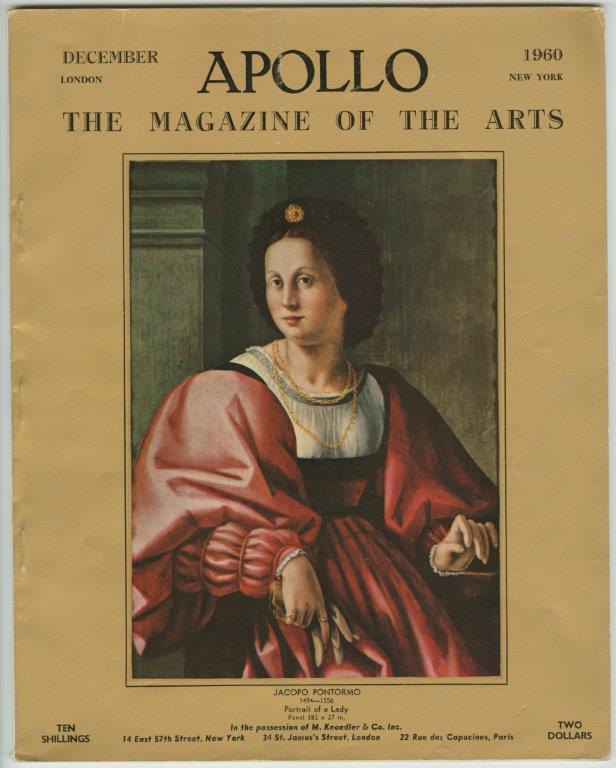One need not practice Tibetan Buddhism to grasp the concept of impermance. From the Dalai Lama to your friendly neighborhood auctioneer, we are all in a permanent state of transformation. The supermarket cashier who rings up your groceries today will look (and feel) much different in 10 years’ time, and even more so in twenty or thirty. Despite outward changes, however, our identity, remains fairly constant. Even if that identity is just a story we tell ourselves to give cohesion to our life’s narrative.
Some selves are better than others
Yet not all stories are created equal, as the especially fascinating tale of the present painting’s attribution – or better, series of attributions – proves.
According to consensus that has emerged in light of recent studies and exhibitions, “Portrait of a Lady” (above) is the work of Pierfranceso di Jacopo Foschi. The painting’s previous attributions include Andrea del Sarto and Jacopo da Pontormo. The latter attribution alone would raise its value to as high as several million euros, yet all the money in the world can’t buy mystique – a quality this work abounds in, and whose complex origins magnify.

Collaboration and concatenation
That the painting’s authorship is hard to pin down is not surprising; Foschi, after all, was a pupil of Andrea del Sarto and collaborated with Pontormo in frescoes at Careggi in 1536. Best known for the portraits he painted from 1530 to 1540, such as “Portrait of a Young Man Weaving a Wreath of Flowers” (now at the Utah Museum of Fine Arts) and “Portrait of a Man” (now at Uffizi Gallery in Florence, Italy) Foschi had an uncanny gift for painting his subjects’ true likeness. The present work certainly achieves this.
It is comparable to the “Portrait of a Lady” (Madrid, Thyssen-Bornemisza Collection no. 145) which must date from the same period. Both works present their sitters in similar dresses with puffed sleeves and in nearly identical headdress.
Foschi: a flavor all his own
Composed in a world dominated by the personalities of Pontormo and Andrea del Sarto, the painting also incorporates other influences, such as the Northern portraiture that was on display at the sophisticated Florentine courts at the time. Viewed alongside the work of Tommaso di Stefano (to whom “Portrait of a Lady” has also been attributed), Pietro di Matteo, Rosso Fiorentino, Franciabigio and Jacone, Foschi’s style is quite distinct.
Self-assurance
As for the lady: she seems to know exactly who she is! In contrast to the static posture of early Greek figure sculpture, in which the weight is evenly distributed on both legs, the contrapposto of the Mannerist style evident here turns the subject’s head slightly to the side, creating spontaneity and a sense of movement. This dynamic posture, combined with its sumptuous colour and breathtaking clarity of details, lends the portrait a rare vibrance.
A thing of beauty is a joy forever
Depending on which way the pendulum of attribution swings, this lady’s net worth might soar to the stratosphere or stay fixed like a star in the firmament. She will remain radiantlly, boundlessly beautiful.
“Portrait of a Lady” is Lot 15 in Dorotheum’s old master paintings auction on April 19, 2016.
Old Master Paintings
Date: 4/19/2016, 5pm
Location: Palais Dorotheum Wien
Exhibition: 09.04. – 19.04.2016













